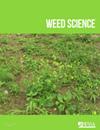第14类除草剂的发现、行动方式、抗性机制和可持续利用行动计划
IF 2.1
2区 农林科学
Q2 AGRONOMY
引用次数: 3
摘要
原卟啉原氧化酶(PPO)抑制除草剂在问世60年后仍然是一种重要而有用的化学物质。在这篇综述中,基于美国杂草科学学会2021年题为“PPO抑制除草剂的历史、概述和行动计划”的研讨会上介绍的主题,我们讨论了PPO抑制除草剂的现状。近年来,由于使用的增加和抗性的增加,人们对PPO抑制剂的作用机制重新产生了兴趣,这导致了对PPO抑制剂作用机制的了解的改进。本文讨论了植物中PPO的两种同工异构体的重要性,汇编了目前靶点抗性机制的知识,研究了非靶点抗性案例,并回顾了作物的选择性机制。为了有效地研究和比较ppo抑制剂耐药病例,一致性和可重复性的温室筛选和靶点突变检测是必要的。为此,我们介绍了筛选的最佳实践,以准确识别抗性比,并正确解释点突变的常见筛选。有效和可持续使用PPO抑制剂的未来依赖于开发新的化学物质,以保持对耐药生物型的活性,并促进对新旧PPO抑制剂的负责任管理。我们介绍了新型PPO抑制剂trifludimoxazin的生物设计,以突出PPO抑制剂开发的未来,并讨论了使用PPO抑制剂的可持续杂草控制计划的要素,以及如何激励负责任的管理。PPO抑制剂在未来农业中的持续使用依赖于从作用方式和耐药性研究向农学家、推广工作者和农民的有效和及时的沟通。本文章由计算机程序翻译,如有差异,请以英文原文为准。
Discovery, Mode of Action, Resistance Mechanisms, and Plan of Action for Sustainable Use of Group 14 Herbicides
Abstract Protoporphyrinogen oxidase (PPO)-inhibiting herbicides remain an important and useful chemistry 60 yr after their first introduction. In this review, based on topics introduced at the Weed Science Society of America 2021 symposium titled “A History, Overview, and Plan of Action on PPO Inhibiting Herbicides,” we discuss the current state of PPO-inhibiting herbicides. Renewed interest in the PPO-inhibiting herbicides in recent years, due to increased use and increased cases of resistance, has led to refinements in knowledge regarding the mechanism of action of PPO inhibitors. Herein we discuss the importance of the two isoforms of PPO in plants, compile a current knowledge of target-site resistance mechanisms, examine non–target site resistance cases, and review crop selectivity mechanisms. Consistent and reproducible greenhouse screening and target-site mutation assays are necessary to effectively study and compare PPO-inhibitor resistance cases. To this end, we cover best practices in screening to accurately identify resistance ratios and properly interpret common screens for point mutations. The future of effective and sustainable PPO-inhibitor use relies on development of new chemistries that maintain activity on resistant biotypes and the promotion of responsible stewardship of PPO inhibitors both new and old. We present the biorational design of the new PPO inhibitor trifludimoxazin to highlight the future of PPO-inhibitor development and discuss the elements of sustainable weed control programs using PPO inhibitors, as well as how responsible stewardship can be incentivized. The sustained use of PPO inhibitors in future agriculture relies on the effective and timely communication from mode of action and resistance research to agronomists, Extension workers, and farmers.
求助全文
通过发布文献求助,成功后即可免费获取论文全文。
去求助
来源期刊

Weed Science
农林科学-农艺学
CiteScore
4.60
自引率
12.00%
发文量
64
审稿时长
12-24 weeks
期刊介绍:
Weed Science publishes original research and scholarship in the form of peer-reviewed articles focused on fundamental research directly related to all aspects of weed science in agricultural systems. Topics for Weed Science include:
- the biology and ecology of weeds in agricultural, forestry, aquatic, turf, recreational, rights-of-way and other settings, genetics of weeds
- herbicide resistance, chemistry, biochemistry, physiology and molecular action of herbicides and plant growth regulators used to manage undesirable vegetation
- ecology of cropping and other agricultural systems as they relate to weed management
- biological and ecological aspects of weed control tools including biological agents, and herbicide resistant crops
- effect of weed management on soil, air and water.
 求助内容:
求助内容: 应助结果提醒方式:
应助结果提醒方式:


